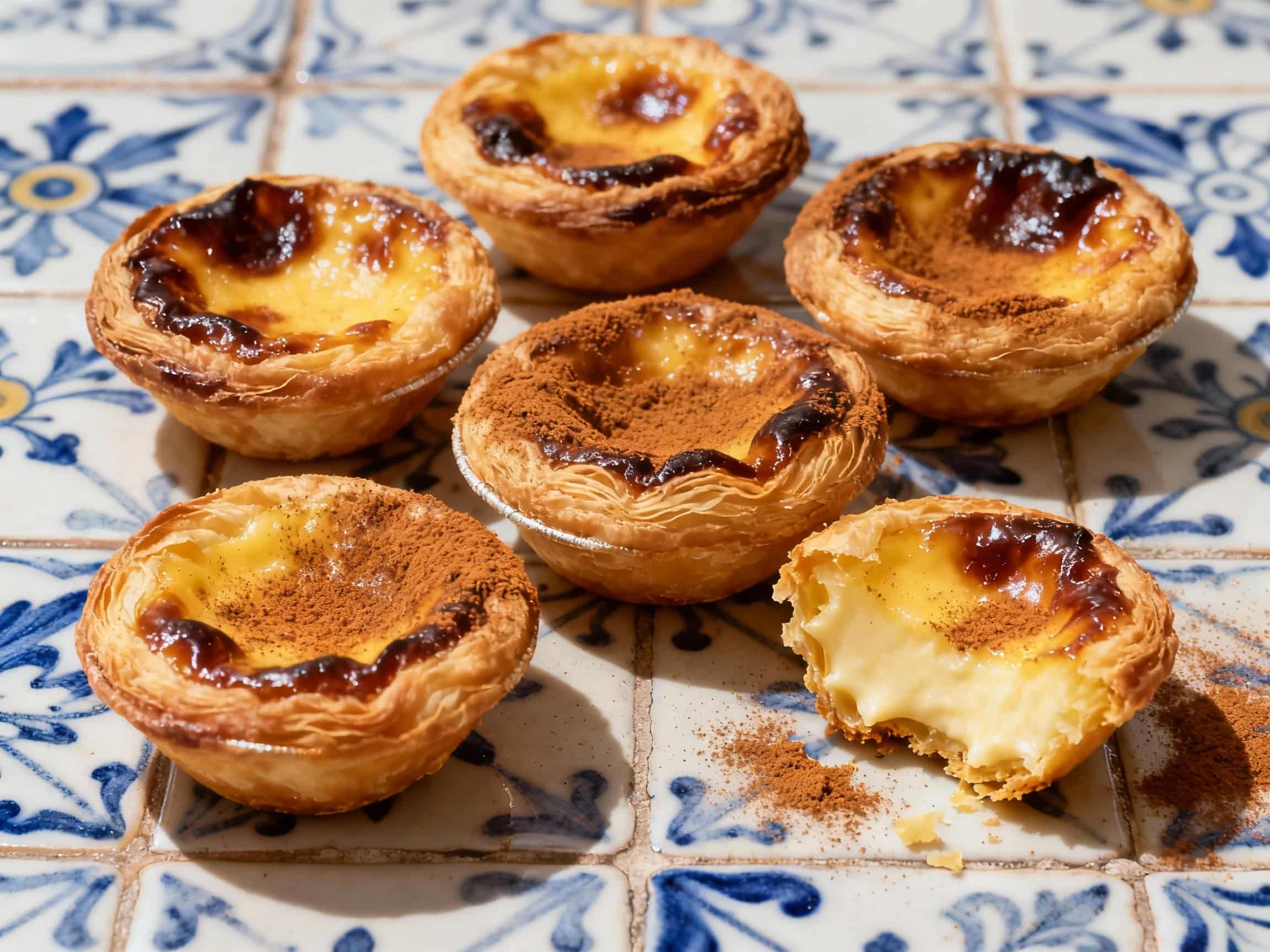
Pastéis de Nata
Pastéis de Nata
- Country
- Portugal
- Region
- Lisbon
- Recipes
- 3 Recipes
Dish information
Pastéis de Nata, the iconic Portuguese custard tarts, are miniature masterpieces of pastry and cream that have captured the hearts and palates of people worldwide. Originating from the ancient convents of Portugal, particularly the Jerónimos Monastery in Belém, Lisbon, these tarts were created by monks and nuns who used egg whites to starch their habits, leaving behind a surplus of egg yolks. They ingeniously transformed these yolks into a rich, creamy custard. Historically, convents were centers of culinary innovation, and Pastéis de Belém, as they were originally known, quickly became famous. The recipe was a closely guarded secret for many years, first developed commercially in 1837 by the Fábrica de Pastéis de Belém. The unique combination of a crisp, flaky puff pastry shell and a velvety, lightly caramelized custard filling, often dusted with cinnamon and powdered sugar, makes them irresistible. These tarts are a quintessential part of Portuguese culture, enjoyed at breakfast, as a snack, or as a dessert, typically with a strong Portuguese coffee. They represent a sweet legacy of Portuguese history, showcasing the country's rich monastic traditions and its flair for creating exquisite pastries.
Timeline
Monks and nuns in Portuguese convents, particularly in Belém, begin creating custard tarts using surplus egg yolks.
The recipe for Pastéis de Belém is commercialized at the Fábrica de Pastéis de Belém shortly after the convents were closed.
A similar, widely recognized version of the tart, then often called Pastéis de Nata, becomes common throughout Lisbon.
Pastéis de Nata gain international recognition and are re-created in Portuguese communities globally.
Pastéis de Nata are declared one of the Seven Wonders of Portuguese Gastronomy.


